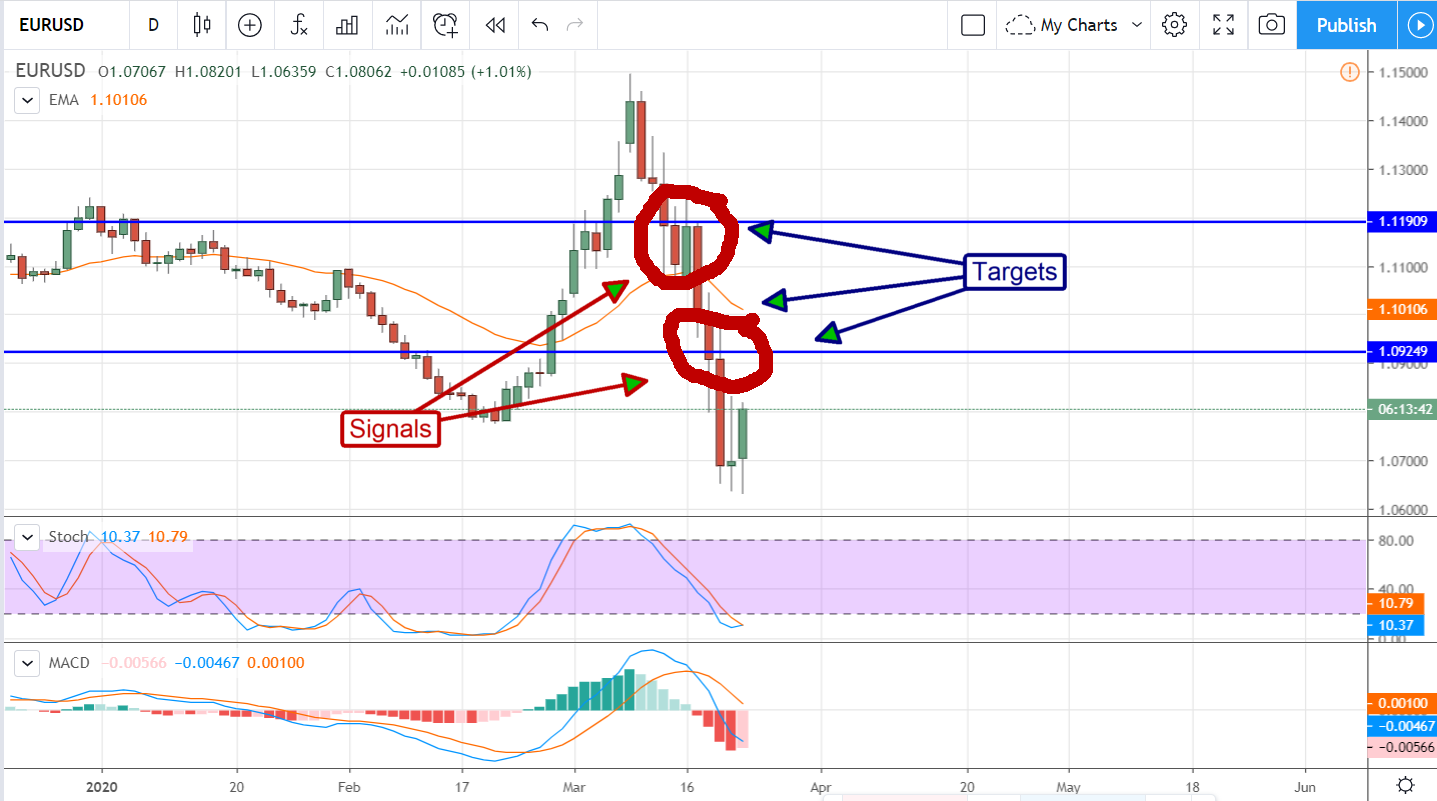The Very Important Difference Between A Target And A Signal
It took me quite a while to understand the difference between a target and a signal. Things like moving averages, Fibonacci Retracements, and support & resistance lines are targets. Head & Shoulders, Rising Three Methods, and Bullish Crossovers are signals. To be an effective trading, you have to understand the difference and be able to use them together.
Targets And Signals Are Not The Same
The part that makes this difficult for newbies can be summed up in one question; what came first, the chicken or egg? Targets are generally accepted price levels you derive from signals or other analysts. These levels are prices at which the market can be expected to move, or not, and are carefully watched for signals. Signals are price movements that occur at our targets that give an indication of which way prices will move in the future.
A simple target/signal combination is the moving average. The moving average is a measure of average prices over the last X number of days and often acts as support. This makes the moving average a target because it is a price level at which buyers or sellers will begin buying or selling, or not. In the case of a bullish trend a trader may want to wait for price action to pull back to the moving average target for his (or her) entry points. The signal to buy is not when price action touches the moving average but when you can see the moving average affect price action. If support is still present it will become evident in the price action and the price action will give a bullish signal. If support is not present price action will fall through the MA and give a sell signal.
The same thing is true with Fibonacci Retracement. The retracement levels are eerily accurate at predicting where signals will form but are notoriously unhelpful at prediction direction. Once price action reaches a retracement level and gives the next signal that trades can be made. Acting too early often results in unnecessary losses, good trades getting stopped out before they can profit, and missing out on trades once the real signals show themselves.
The best signals come with price action and usually involve 1) a break of support/resistance or bounce from support/resistance and 2) a confirmation of the first signal. Once price action reaches your target wait for the initial signal. The initial bounce or break through tells you which position to take. Then, when the second and confirming signal fires it’s time to make the trade the first signal was indicating.
